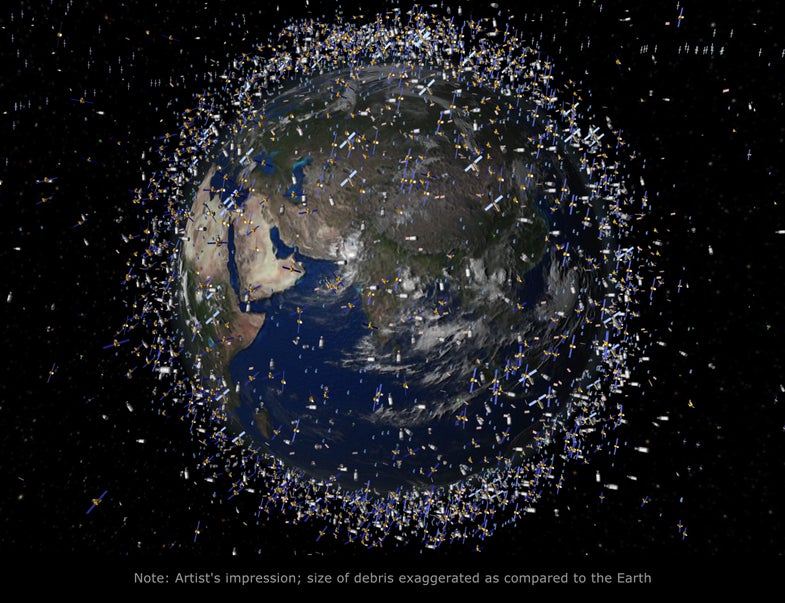As Space Collision Threat Looms, Pentagon Upgrades Its Monitoring of Satellites
The U.S. Air Force has upgraded its ability to predict possible satellite collisions, as the risk from space debris increases

Satellites currently must dodge an ever-growing gauntlet of other satellites and clouds of space debris, and this year the Pentagon has quietly upgraded its surveillance accordingly. The U.S. military announced yesterday that it now tracks 800 maneuverable satellites, compared to less than 100 prior to a February collision between an active U.S. satellite and a retired Russian communications satellite.
That crash served as a wakeup call and emphasized the vulnerability of U.S. satellites, according to General Kevin Chilton, commander of U.S. Strategic Command. Reuters reports that the Air Force also plans to track an additional 500 non-maneuvering satellites by the end of year, and thereby keep tabs on the roughly 1,300 active satellites currently in orbit.
A new UK study also predicts that close orbital encounters with space debris will continue to grow by 50 percent over the next decade, and by 250 percent over the next 50 years. It estimates that satellite handlers may have to make five times as many collision-avoidance moves in 2059, compared to 2019. This will add significantly to the cost of future space flight, the study warns.
Even the space shuttle Discovery and the International Space Station have had to make course adjustments to dodge pieces of space junk in recent years. The need for better surveillance led the U.S. Air Force to team up with three major aerospace companies, in an effort to develop an electronic fence that can track any orbital object larger than two inches in width.
Solutions for cleaning up the space debris don’t come easily. A French aerospace engineer of the European company EADS plans to test an orbital shroud that can pull defunct satellites down to a fiery death, and mad science agency DARPA also seeks proposals for clearing space debris out of orbit.